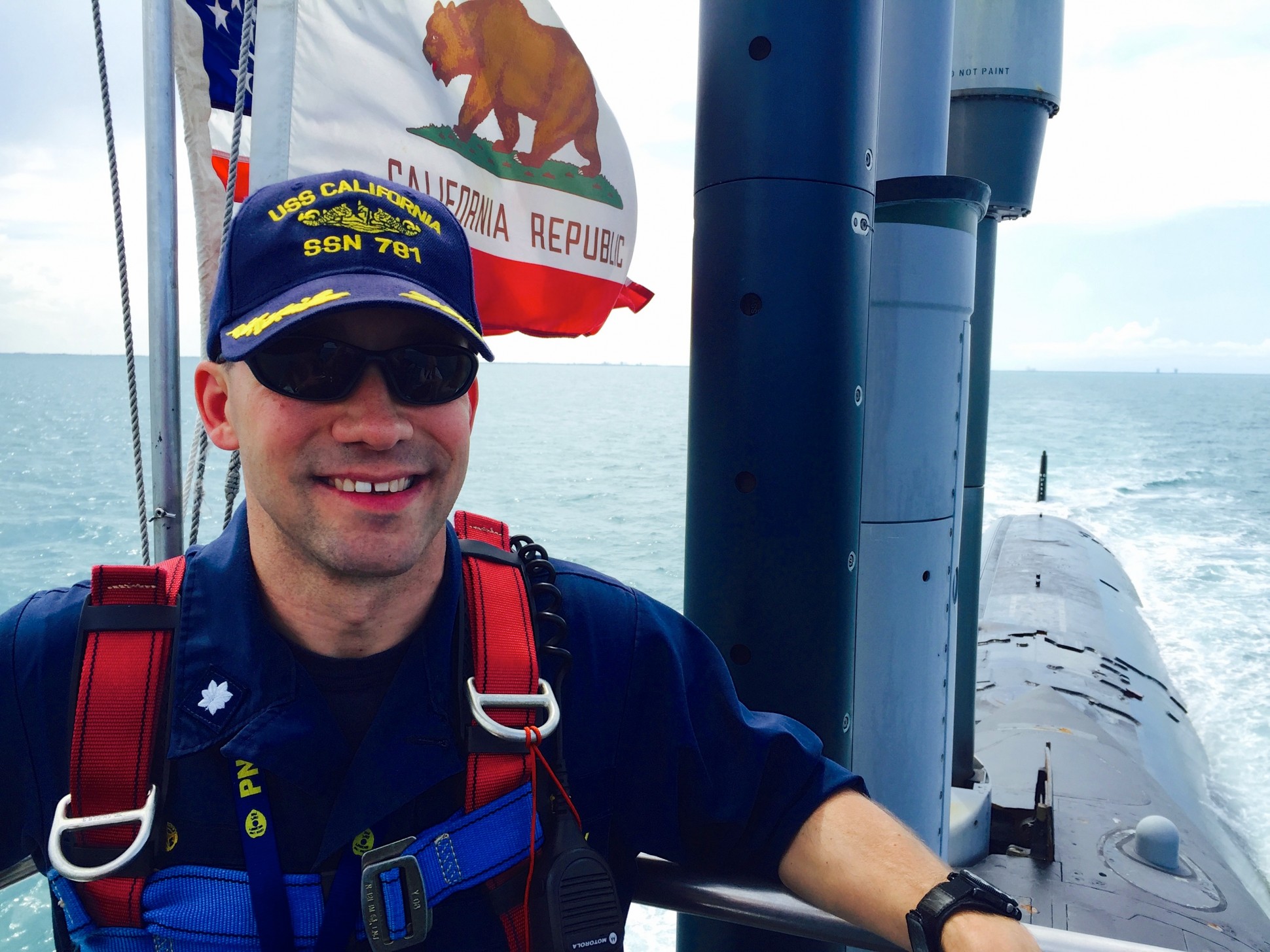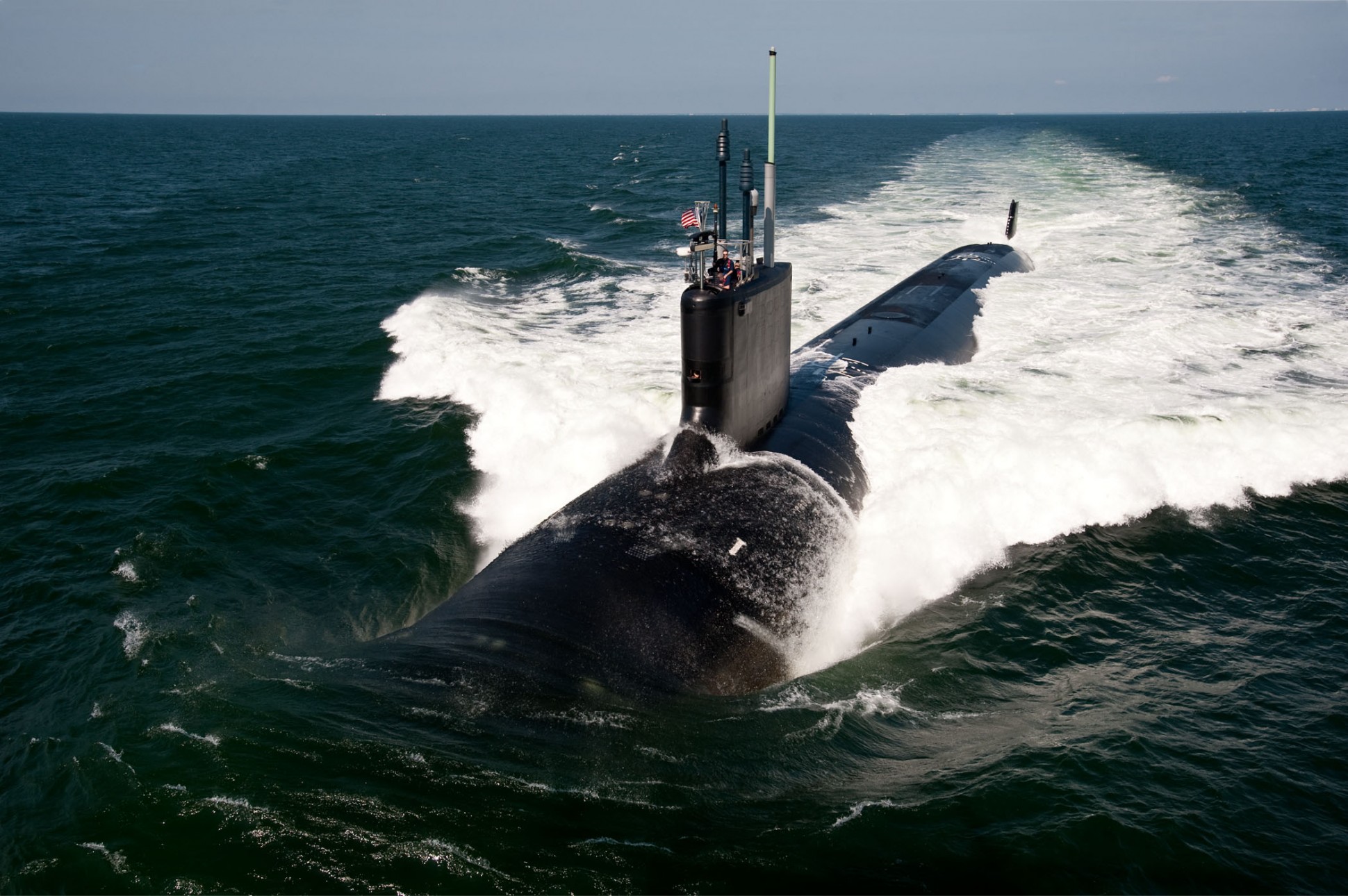Ice Cream And Individualism: Leadership Lessons From A U.S. Navy Submarine
The crew of the attack submarine USS California is still talking about the ice cream they had to leave on the dock in Haakonsvern, Norway. In restocking for their next voyage across and under the Atlantic Ocean, they had no space left to store the frozen dessert.
That was more than six months ago. It still bothers them.
Perhaps because so many of the basics such as sunlight, space and being with family must be subordinated to the boat’s mission, some smaller indulgences become obsessions. On the California, one of them is ice cream.
"Sometimes it’s the little things,” said Senior Chief Electronics Technician John Glamm. "You’ve been going for 20 hours and just to sit down with a bowl of ice cream…” His voice trailed off as it became reverential.
"Food is absolutely a motivator for the crew,” said Commander Eric Sager, captain of the California. "Ice cream is a big deal, not just the ice cream we make on board, but ice cream made on shore.”
To understand why ice cream could become so important on one of the U.S. Navy’s newest class of nuclear-powered attack submarines, one must appreciate – as much as someone who is not a submariner can – all the differences between the crew’s lives and everyone else’s. There is no better example of what it takes to get a large group of people to perform under extreme conditions than inside a submarine.

At any time, roughly 1,100 officers and 9,100 enlisted men and women are serving aboard U.S. Navy submarines. The California is one of 71 vessels spread around the globe, patrolling, spying, following other adversaries’ subs and ships, protecting American aircraft carriers and sneaking Navy SEALs to hostile coastlines. Fourteen are solely dedicated to carrying nuclear ballistic missiles to deter North Korea, Russia or China from using their nukes. Their locations are highly classified.
What’s often obscured in the seriousness, the secrecy and the technology is that each submarine is a submerged workplace. Each officer is a manager. Each torpedoman, nuclear machinist, cook and electrical technician is an employee. Human nature is human nature; it’s just under more pressure.
"Among the challenges presented by a submarine deployment are a paucity of personal space, long periods with no sunlight, an unusual day/night schedule and extended periods of separation from friends and loved ones with minimal communication,” states a 2009 report on psychological assessments of submariners. "When we combine these with a very cognitively demanding workload, a requirement for extremely high levels of job/task proficiency, a rigid military hierarchy and no psychiatric support underway, it becomes evident that the psychological resilience of the crew needs to be greater than that required for most jobs.”
Few environments create a more challenging environment for a leader to motivate his team. Depending on the abilities of the commander and his subordinate officers, the time under way sequestered with his team can create camaraderie or hostility, safety or injury, missions accomplished or missions botched. Because of these pressures, submarines have proved a unique lab for leadership, human psychology and physiology and workplace safety. When those who plan space expeditions want to understand the stresses astronauts will have during long periods in orbit, they look to subs.
Commanding a submarine requires a thorough working knowledge of nuclear power, sonar, naval battle tactics, potential enemy capabilities and dozens of other specialties. Effectively leading the crew requires a thorough working knowledge of each officer’s and sailor’s personality and family circumstances, how he takes coaching and recognition, how he learns best, and when to request the six cooks aboard make pizza to give the crew a shot in the arm.
The California is the eighth of 11 Virginia-class attack subs currently in service. Four more are under construction. The boat (it’s frowned on to call a U.S. Navy ship a boat, but it’s considered a correct term for a submarine) is 377-feet-long and can travel at speeds over 25 knots when submerged. It can remain below the surface for three months at a time.
Most of what it’s done and all of what it will do is classified. "My wife sends me these long emails. I don’t have much news; I can’t really talk about the job,” said Lt. Robert Block. "I just respond to what she writes.”

Some months ago, one of his officers was directing the boat as it rose to periscope depth. The operation is deadly serious; a mistake could cause the submarine to be detected in hostile waters, take on water, or – exceptionally rarely – cause a collision with a surface ship. The "officer of the deck” must quickly assimilate information from the pilot and co-pilot at the forward end of the control room, the sonar operators to his left, weapons people to this right, and the navigators in the center of the room. He must be decisive – and right. Nearly everything happening in the submarine, including how the cooks are timing meal preparations around the angle of the kitchen as it rises or dives, is in response to that officer’s commands.
The officer of the deck was becoming unnerved. Commander Sager stood at his side. "I leaned over and whispered to him, ‘You’re shaking,’ and then I said, ‘It’s okay.’” The captain continued to quietly coach his junior officer until the operation was complete. "After we safely reached the surface, I recommended he step away and compose himself, maybe splash some water on his face. I said that because I know him. It was the right way to handle it with him. With someone else, there might have been a different way that would have worked best.”
The boat’s mission always takes priority, but if an officer or sailor really needs it and the circumstances can accommodate it, the commander’s authority allows him to rise to periscope depth and connect the submariner with home by satellite. "I’m building buy-in from the crew by investing in their families. I will leave a man in port for the birth of a child,” said the captain. "It’s not something I can promise; there’s always a cost to being one person down. But I think it’s important he be there for a birth.”
Commander Sager’s focus on each crewman is part of a broader trend in the military to appreciate that however standard the ranks, pay grades, responsibilities, training, and uniforms, each member of the services brings a unique bearing, abilities, and vulnerabilities to the mission. A parallel trend runs through civilian organizations. "Honestly,” said the commander, "I don’t think I would approach it any differently if I’d been in the corporate world.”
If the average workplace were sealed up for a few months, chances are when the doors were reopened, inside would be a circus. Assuming there hadn’t been a mutiny, no one would want to hear another word from the CEO or the rest of the leadership. Colleagues would be at each other’s throats. No one would sign on for another stint under those conditions. Little would have been accomplished.
But the Navy submarine fleet creates exceptional levels of accomplishment under trying conditions. Where they succeed, they do it not because they recruit super-humans, not ultimately through military compulsion, not because they have some trick to suspend the laws of human nature, but because a long history of failures and successes taught them how to combine the elements of leadership and support that gets non-quals their dolphins and makes serving undersea an invigorating experience, even if the Norwegian ice cream must be left behind.
Under the right conditions, it’s quite amazing what people can do, and just how much they will accomplish under leadership that is invested in their success. "I am working on empowering them,” said Commander Sager. "I want to help them reach above their seniority level. It’s my responsibility to make each of these officers a commanding officer and to help each of the sailors accomplish all they can. The mark of my leadership is how each of them succeeds.”
(Full disclosure: The author has previously conducted and analyzed research for the U.S. Navy, and worked as an outside advisor to its leaders.)

